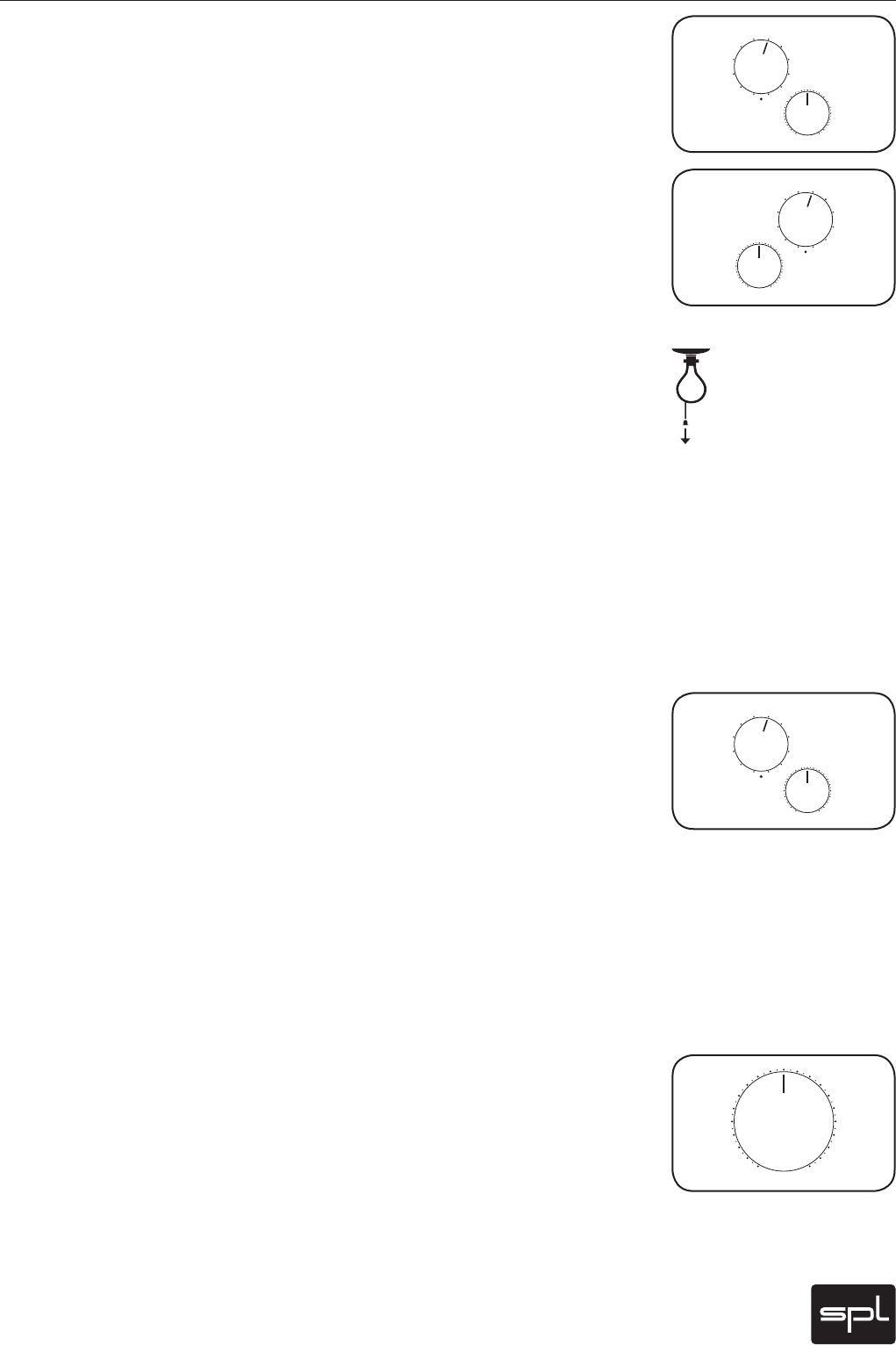
15
Passeq
MHF-HF Cut and HF Boost
Passeq’s high frequency bands have a different layout for the cut and boost ranges: The
MHF-HF cut band exhibits a (wide-band) shelving characteristic, while the HF boost band
exhibits a variable Q, peak lter characteristic.
As seen above, one can also note and intensication in choice of frequencies in the high
range. Here the same reasons apply as in prior cases: Individually designed and constructed
coil-condenser-resistor congurations result in slightly differing sonic characteristics. Thus
beginning at 10 kHz there are seven additional switchable frequencies. The available variable
Q (ranging from Q=0.1 to Q=1.0) allows the engineer access to an enormously exible range
in high frequency boost options.
HF Boost Q Settings with the Proportional Q Principle
With the proportional or variable Q principle, boost control settings would apply only if the
HF boost Q were to be set at Q=1.0 (control set fully clockwise). Were the value to be reduced
(thus increasing the bandwidth), the boost would also be reduced. This can lead to a situ-
ation wherein, for example, a HF boost Q setting of 0.1 and a boost of 3 dB would result in
effectively no audible boost in the chosen frequency—at this value the Q value resides at
about 0.3 dB. With this Q value, don’t hesitate to turn turn up the HF band boost control to
its full 12.5 dB setting—this results in an actual overall increase of around 3.5 dB. Narrower Q
settings, for example, to 0.6, result in further level boosts again.
The advantage of proportional Q as compared to constant Q designs rests with the musi-
cally superior way it functions. The wave energy which resides below the bell curve remains
essentially the same and in the process, retains the balance of high frequencies in relation to
the entire frequency spectrum as one experiments with varying Q values. While it is true that
one must think independently of the scaled HF boost dB values in such cases (because these
only apply to a value of 1), the result is a simpler, more musically sensible and worthwhile
way to work that does not require continual additional corrections.
MHF-HF Cut
The MHF-HF cut band is similar to a shelving lter that can reduce higher frequencies in a wide
bandwidth. It is appropriately wide, beginning with 580 Hz and extending to 19.5 kHz, a range
of over 5 octaves and overlapping the lowest, LF-LMF cut band by just about two octaves.
With it one can lower a very wide bandwidth and with the peak mid range lters further
reduce—or raise—specic ranges. The process can result in the creation of very interesting
curves. Here the maximum cut is -14.5 dB, while the maximum boost reaches +12.5 dB.
The Passeq is not limited to any one particular kind of application, and, for example, is
also especially well suited to processing individual instruments in recording sessions. In
such cases the wide downward reaching MHF-HF cut band may be play an exceptional role.
Individual instruments can easily be cut upwards, either to give them a more compact sound
or when higher frequencies might be supplied from different microphone—or because the
mix simply suggests it.
Output Control
The Output control serves as output level regulator. If boosts increase levels at the output,
they can be reduced again to the input level‘s value. (compare the block diagram “passive
lter at +18 dB boost” on page 21).
The proven “Big Blue” potentiometer from ALPS with 41 steps is employed here to ensure
precise control and minimum tolerances over both channels.
.
)
'
°
)
'
L
L
L
L
L
L
L
L
L
L
$
V
U
°
E
#
)
'
L
L
L
L
L
L
L
L
L
L
L
L
#
P
P
T
U
E
#
.
)
'
°
)
'
L
L
L
L
L
L
L
L
L
L
$
V
U
°
E
#
Operational Elements
0
V
U
Q
V
U
E
#


















